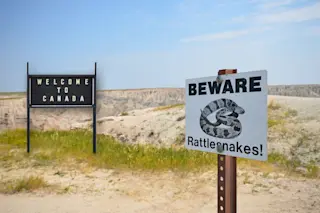Though scientists have been warning about the disastrous impacts that climate change will have on our planet for decades, we are now starting to feel those predictions manifest. As Eric Holthaus pointed out, the "worst nightmare" scenarios are already happening. Droughts, storms, fires, you name it—the world as we knew it is under siege. Heck, we just had the most abnormally hot month on record; February 2016 was 1.35 degrees Celsius warmer than the average, making it two-tenths of a degree more unusually warm than the previous record month: January 2016. And as water supplies dwindle, rainforests burn, and corals bleach, we may have yet another thing to worry about: frickin' snakes. Some parts of the world know all too well the danger posed by venomous snakes. Scientists estimate that anywhere between 421,000 and over 1.8 million envenomations from snakes occur every year, with as many 94,000 deaths. Here in ...
Another Reason To Act Now On Climate Change: Snakes
Explore climate change impacts on snakebite risk as habitats shift, increasing contact with humans and different species.
More on Discover
Stay Curious
SubscribeTo The Magazine
Save up to 40% off the cover price when you subscribe to Discover magazine.
Subscribe













